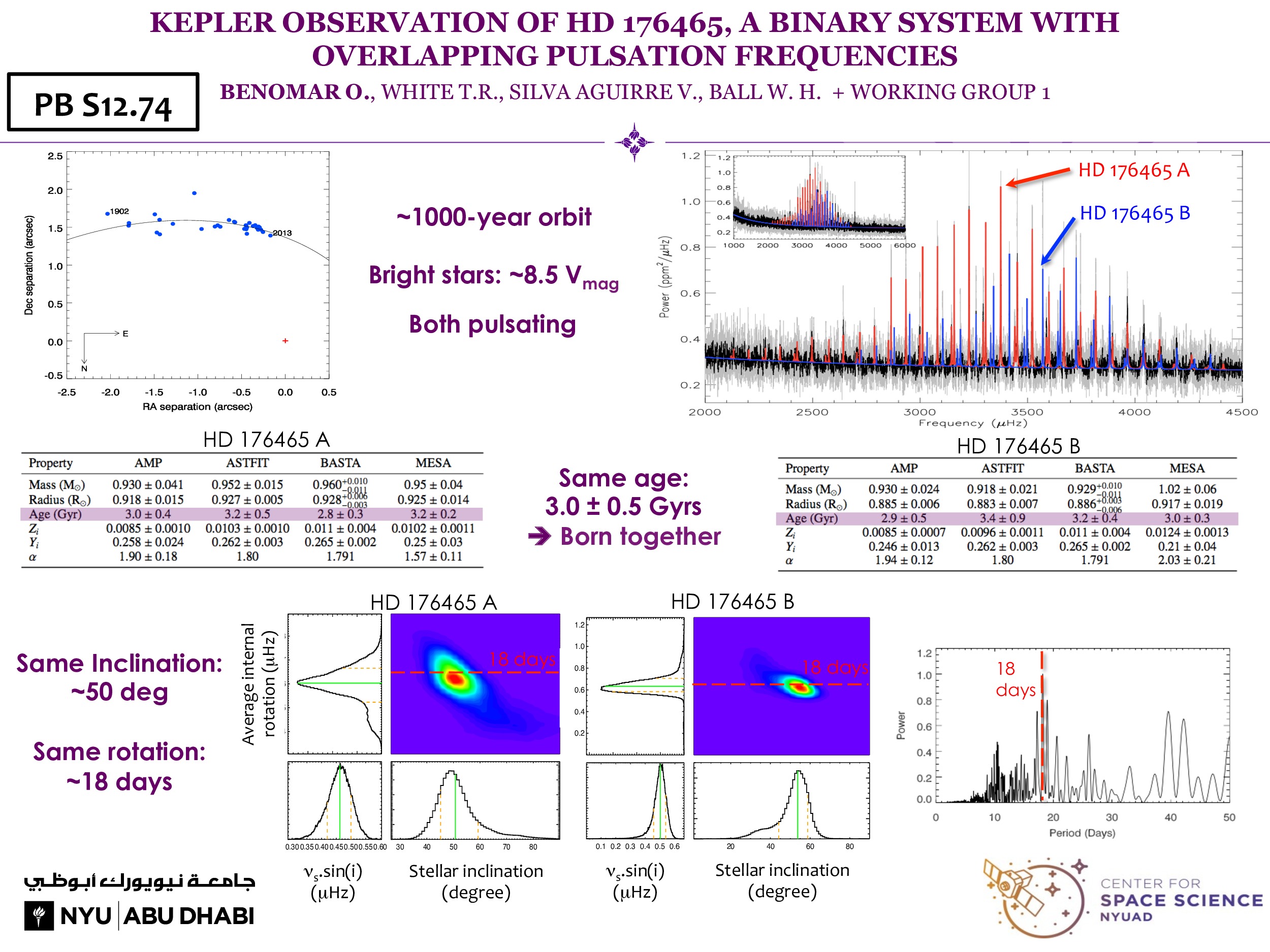Kepler observation of HD 176465, a binary system with overlapping pulsation frequencies
Affiliation
New York University Abu Dhabi
Main category
Natural Sciences (Astrophysics and Astrononmy)
Abstract
Binary stars systems are crucial to better understand the physics of stars, because they might share a common history, enabling us to assume that they have the same age and composition. Furthermore, using the Kepler laws, the orbital parameters could provide tight constraints on their mass ratio. With the recent advent of asteroseismology it is also now possible to look for pulsating multiple stars, providing a new insight on their internal structure and dynamics. Yet, while 60% of stars are thought to be part of multiple system, only a handful were detected with more than one component showing pulsations. I present one of these rare cases, HD 176465. It is composed of two bright stars situated at $49.6 \pm 1.8 pc$, that show pulsations at a similar frequency $\nu_max \approx 3500$ $\mu$Hz. In this poster, I describe our seismic analysis of the system, show the orbits of the stars, discuss their rotations and fundamental physical properties (masses, radii, ages, compositions), derived using various stellar models.
Do you have problems viewing the pdf-file? Download poster
here
If the poster contains inappropriate content, please
report the poster. You will be redirected to the landing page.
